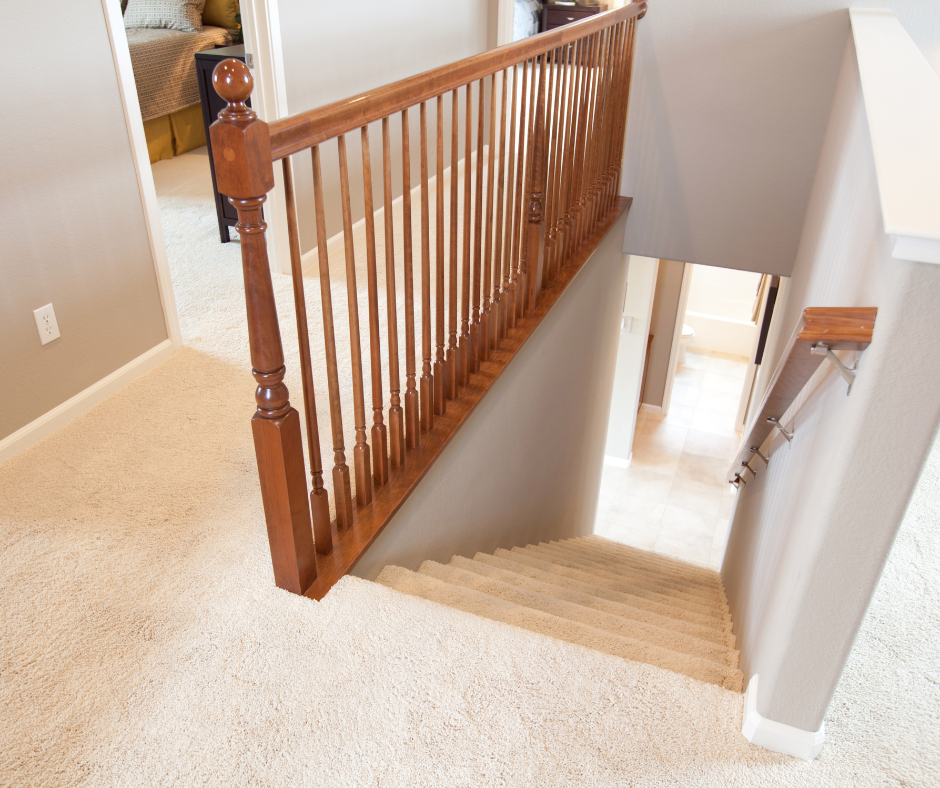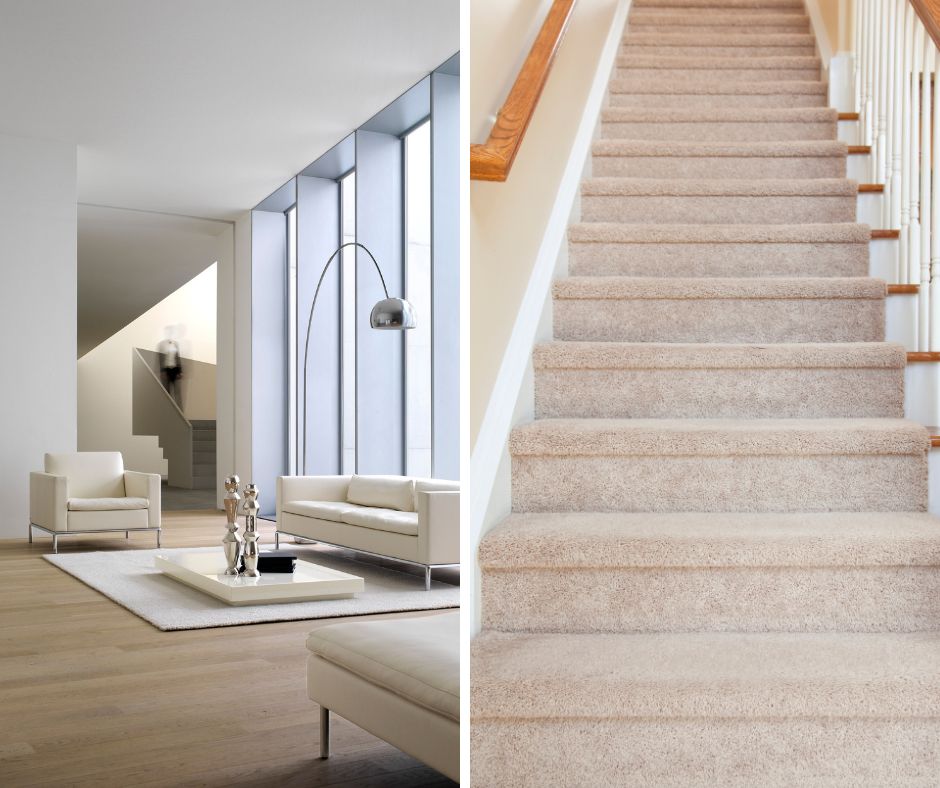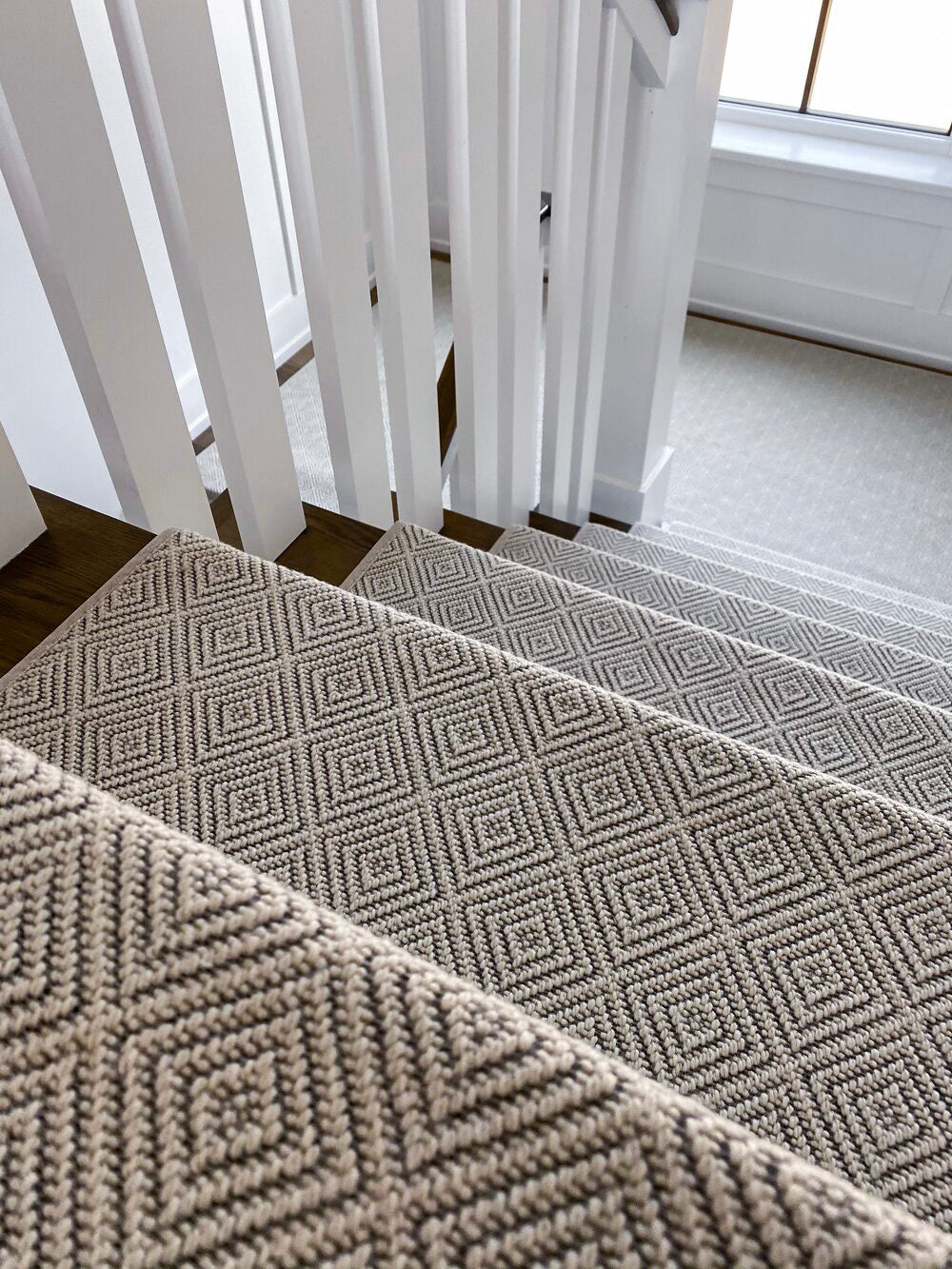A staircase can be the heart of a home—warm, welcoming, and full of character.
Traditional stair spindles are vertical supports that connect the handrail to the base rail, adding both safety and timeless visual appeal.
When paired with carpet stair treads, they create a beautiful and secure staircase ideal for families, pets, and everyday living.
This guide breaks down everything you need to know about choosing, replacing, and upgrading traditional stair spindles.
You’ll learn about spindle types, safety standards, compatible stair parts, and modern alternatives.
Whether you're renovating or building from scratch, you'll walk away confident in your design and safety choices.
Types of Traditional Stair Spindles
Each type brings its own look, feel, and function to your staircase.
Classic Wooden Spindles
These are the heart and soul of traditional staircases.
Made from hardwoods like oak, cherry, or maple, wooden spindles bring warmth and character.
You’ll often see them turned or fluted, adding that handcrafted detail that makes a staircase feel like part of the home.
They're also versatile—you can stain them for a rustic look or paint them to match your home’s color scheme.
Because wood offers so many variations in grain, tone, and carving detail, it gives you a wide range of design freedom without losing the classic look.
For many homeowners seeking both visual charm and long-lasting strength, classic wood remains the number one choice.
Wrought Iron and Metal Options
If you’re after something that still leans traditional but offers a bolder contrast, metal spindles deliver.
Wrought iron with scrolls or twists gives that vintage touch, while steel can feel both strong and classic.
Metal spindles pair beautifully with wood handrails and posts, creating a balanced, transitional style.
These spindles offer a sense of weight and permanence.
They often show up in Colonial or Craftsman-style homes where the architecture calls for bold lines mixed with fine detailing.
Glass and Acrylic (Modern Alternatives)
While not traditionally used, glass and acrylic spindles can be a striking choice for homeowners wanting a more open, airy feel—without straying too far from classic lines.
They allow light to pass through, making them great for brightening up stairwells.
Just note: they skew more modern than traditional.
Still, in homes where modern and vintage elements mix, a carefully selected glass spindle design can offer a fresh take on a familiar space.
What to Know Before You Choose Spindles
Choosing the right spindles starts with knowing your options.
Building Codes Matter
Before updating your staircase, check your local building codes.
Most codes require spindles to be spaced no more than four inches apart, to prevent children or pets from slipping through.
Safety isn’t just about strength—it’s about spacing and stability too.
For families with toddlers or older pets, this regulation is essential for everyday peace of mind.
Keep It Consistent
Style cohesion matters.
The spindles should feel like part of the same story as your handrails, newel posts, and even your stair treads.
If your home leans farmhouse, ornate metal scrolls might feel out of place.
Stick with materials and shapes that match the spirit of your space.
This is where understanding traditional stair parts as a whole helps.
A staircase that blends spindles, rails, and newels with matching tones and curves will always feel more put together.
Installation Basics
Poor installation can undo all your planning.
Spindles should be securely fastened at both the base and top rail.
If they wiggle, it’s a sign they weren’t installed properly.
DIYers with some carpentry skill can tackle the job, but don’t be afraid to call in a pro for a safe, lasting finish.
Especially with hardwood spindles, proper drilling and angle alignment are critical to the staircase's durability and appearance.
The Importance of Traditional Stair Parts
Traditional stair spindles don’t stand alone—they’re part of a larger system of parts that work together both structurally and visually.
Understanding how they all fit can make your project smoother from start to finish.
Handrails and Newel Posts
Handrails provide support, but they also serve as the top line that draws the eye along the staircase.
Choosing a handrail that complements your spindle design—whether square, rounded, or fluted—helps complete the look.
Newel posts anchor the stairs at corners and landings.
They tend to be thicker and more ornate than spindles and help frame the staircase's shape.
Whether you're using solid wood or a post with an inlay design, newels give your staircase its architectural presence.
In traditional stair parts design, matching your handrails, newels, and spindles in color and texture goes a long way toward creating a finished space.
Base Rails and Stringers
The base rail holds the spindles in place at the bottom, while stringers run along the side or underneath the steps, offering structural support.
While often overlooked, these components define the flow and strength of your stairs.
If you’re upgrading traditional stair spindles, don’t forget to assess whether your base rail needs to be replaced too.
A fresh spindle won't hold up properly if the track it's sitting in is cracked or uneven.
What Else Can You Use Instead of Spindles?
Not every staircase needs spindles to look complete.
There are sleek, modern alternatives that offer safety and style in new ways.
Glass Panels
Glass panels stretch from top to bottom with no breaks between.
They offer a streamlined and transparent look that’s ideal for modern or minimalist homes.
They’re often used in open-concept designs to keep sightlines clear.
Although glass panels are not a traditional stair part, they can sometimes be used to update an older staircase without fully replacing its structure.
Cable Railings
Cable railings run horizontal instead of vertical and use tensioned stainless steel wire.
This look is ultra-modern and tends to show up in loft-style or coastal homes.
While it won’t satisfy traditional design lovers, it may appeal to those trying to mix modern edge with natural textures like reclaimed wood.
Can You Just Replace Spindles?
Before replacing any spindle, check the whole staircase for damage.
This includes handrails, base rails, and the treads themselves.
If any traditional stair parts are cracked or loose, it’s best to repair those before installing new spindles.
A fresh spindle will only last as long as the surface it’s attached to.
Style Matching
Replacing just the spindles can make a huge difference, but you want to make sure your new spindles match your home’s tone and the existing stair parts.
Mismatched tones between wood types or clashing finishes can make the upgrade feel disconnected.
Many homeowners choose unfinished wooden spindles so they can stain them to match existing stair parts.
This offers maximum control over the final look.
DIY or Call a Pro?
Installing traditional stair spindles can be a rewarding weekend project—if you have the right tools and patience.
However, professionals can measure, cut, and fit your spindles for a flawless finish, ensuring they meet building codes and hold firm under pressure.
If your staircase has curves or custom angles, a professional may be the smarter route.
Why Traditional Stair Spindles Are Worth the Upgrade
When you invest in traditional stair spindles, you're doing more than upgrading your staircase.
You’re preserving the craftsmanship of your home while improving its safety and comfort for years to come.
Here’s what makes them a smart choice:
-
Timeless Appeal: Traditional designs don’t go out of style. They stay relevant, whether your home is brand new or over a century old.
-
Added Safety: Properly spaced and installed spindles help prevent dangerous falls and keep pets and children safe.
-
Home Value: Upgraded stair parts can improve resale appeal—especially when they match the home’s architecture.
-
Custom Fit: With endless shapes and materials, you can make the design truly your own.
If you're adding carpet stair treads to protect against slips and give your steps a cozy feel, matching them with the right spindles makes the entire staircase feel more intentional.
When selecting between metal and wood or deciding whether to repaint or restain, consider how each option pairs with your existing traditional stair parts.
Details like these are what turn a project into a home upgrade that lasts.
Stepping It Up
Traditional stair spindles do more than complete a staircase—they help define the entire look and feel of your home.
Whether you're restoring a farmhouse staircase, updating a dated landing, or creating something brand new, there’s a spindle style out there that matches your vision.
And when paired with well-chosen traditional stair parts like handrails, base rails, and posts, your stairs can become one of the most beautiful and practical parts of your space.
If you're ready to make your stairs safer, cozier, and more stylish—without tearing up your floors—Oak Valley Designs is here to help.
We specialize in easy-to-install, American-made stair solutions that deliver beauty with heart.
Let us help you choose the perfect match.
-
Website: https://oakvalleydesigns.com/
-
Phone: 706.331.0315
-
Email: info@oakvalleydesigns.com
-
Address: 30 River Ct SW Bldg E Cartersville, Ga 30120



